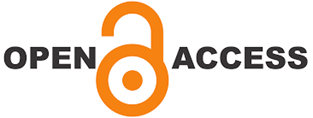Open Access

"Open Access" logo by art designer at PLoS is licensed under CC BY-SA 3.0.
Open access is one of the cornerstones of open science, it is a publishing scheme that allows immediate, permanent, and free online access to the results of publicly funded science and research. These include peer-reviewed articles in scientific journals, papers in scientific collections, monographs, or datasets.
Benefits of open access:
- Increasing the visibility and accessibility of science.
- Improving the quality of research as well as education through access to more information resources.
- Increased citation rate and prestige of the scientist and his/her institution.
- More effective use of results and funding (elimination of duplicates).
- Expanding the possibilities of evaluating research results.
- Rapid sharing of knowledge and latest findings, more efficient scientific communication in the scientific and academic communities.
- Sharing of peer-reviewed information without financial, legal, or technical barriers.
- Strong visibility of the University's scientific achievements.
Ways of Open Access:
- Green Route
In addition to publishing in traditional closed journals, the author will deposit the manuscript in a digital archive – a repository (personal, institutional, subject based). The article is deposited in a version before the peer review process (preprint) or after it (post print). The version, licence, level of access and any time embargo are governed by the licence terms signed by the author in the contract with the publisher.
- Gold Route
The author publishes the text in a peer-reviewed scientific journal and the publisher makes the final version of the text immediately freely available on the Internet. The expenses of publishing the text (APC – Article Processing Charge) are usually paid by the author or the institution where he or she works.
- Diamond/Platinum Route
The journals and articles in them are fully open access, and publishing in these journals is also free of charge for the authors. The publisher bears the costs of running the journal. The form of funding can be different, ie. grants, money from institutions or associations of institutions (research institutions or universities), from volunteer activities and/or from advertising.
Forms of publication in open access journals:
- Full Open Access
The text is published in an open journal and is immediately available, APC is covered by the publisher.
- Open Access with embargo period
The text is released for open access use only after a specified period after publication, usually from 6 to 24 months.
- Hybrid Open Access
Hybrid open access journals combine the conventional subscription-based publication model with open access articles that are not behind a paywall. Journal subscribers can access the full content of all the journal’s articles, while non-subscribers can only read the open access articles in full.
Most often it is a traditional journal, APC is covered by the author. Hybrid journals are often double dipped – the institution pays a publication fee on behalf of the author and subscribes to the title, too.
Useful links
Open journals
can be searched in Directory of Open Access Journals (DOAJ) database.
Open repositories:
Open Access Week
Open Access Week is an international project focused on promoting the use of open access in (not only) libraries and scientific institutions. This event is regularly held in October and involves Czech and foreign scientific institutions.
For more information visit the international web page of the project.